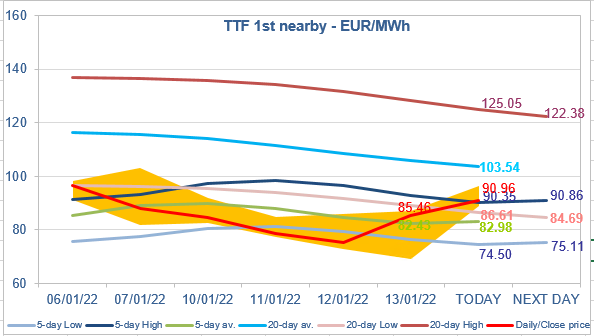

This Monday, September 21, a price peak of €200.04/MWh was registered in the electricity markets of France, Germany, Belgium and the Netherlands, and the British market also joined the party with a price peak of £187.10/MWh. This case could be considered relatively isolated, given that, although they are prices that were more than exceeded in the past, they are not the usual prices in these Central European markets. But just the week before, on Tuesday, September 15, there was another price peak in these same markets, this time of €189.25/MWh.
The causes of these price peaks lie in the combination of various factors. Among the most important are, on the one hand, the low nuclear energy availability in France and a low wind energy production and, on the other, the high temperatures registered on the continent in this second half of September that pushed the demand especially in France, where the highest national average temperatures for this time of year of at least the last 25 years were reached at the beginning of the second half of September. In Germany it was not as pronounced, but on some specific day the highest national average temperature of the last 20 years was registered.
The future with the energy transition and the climate change
Although it can be considered an exceptional and isolated episode, there is a question that lurks: will these episodes be repeated more and more? Given that the climate change inevitably leads us to higher and higher temperatures, which will increase the demand in summer, and to drier seasons, which will lead to a lower hydroelectric energy production, it is worth asking how these new conditions will affect the electricity markets prices.
To this must be added the reduction, and disappearance of the nuclear capacity in some countries such as Spain and Germany, and the increase in non‑manageable renewable energy, such as the wind energy and the photovoltaic energy. With all this, there will be less base production and a highly variable renewable energy production that could lead to situations like the one that happened in recent days in Europe of high demand and low production availability, which will lead to very high price peaks.
So where is the key to a sustainable energy transition? Obviously, a successful energy transition is not something that can be explained in a couple of paragraphs, but there are certainly two key aspects, the flexibilisation of the demand and the energy storage. Both aspects will help to reconcile the demand and the production at all times, so that prices remain stable.
Achieving this transition in a balanced way, while increasing the renewable capacity, making the demand more flexible, reducing the nuclear capacity and incorporating the storage, will be a feat.
The financing of renewable energy projects for the energy transition.
Follow Aleasoft on Twitter:
[tfws username=”AleaSoft_EN” height=”700″ width=”350″ theme=”light” color=”#FAB81E” tweets=”2″ header=”yes” footer=”yes” borders=”yes” scrollbar=”yes” background=”yes”]













